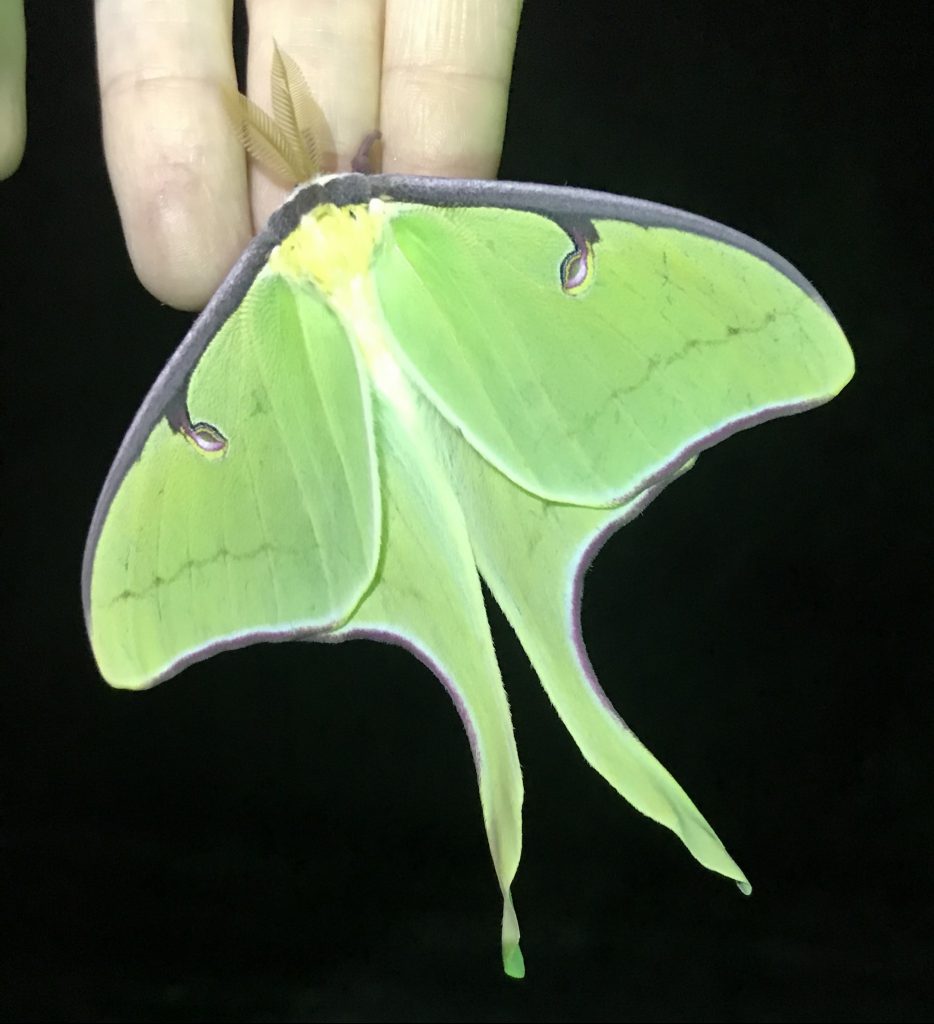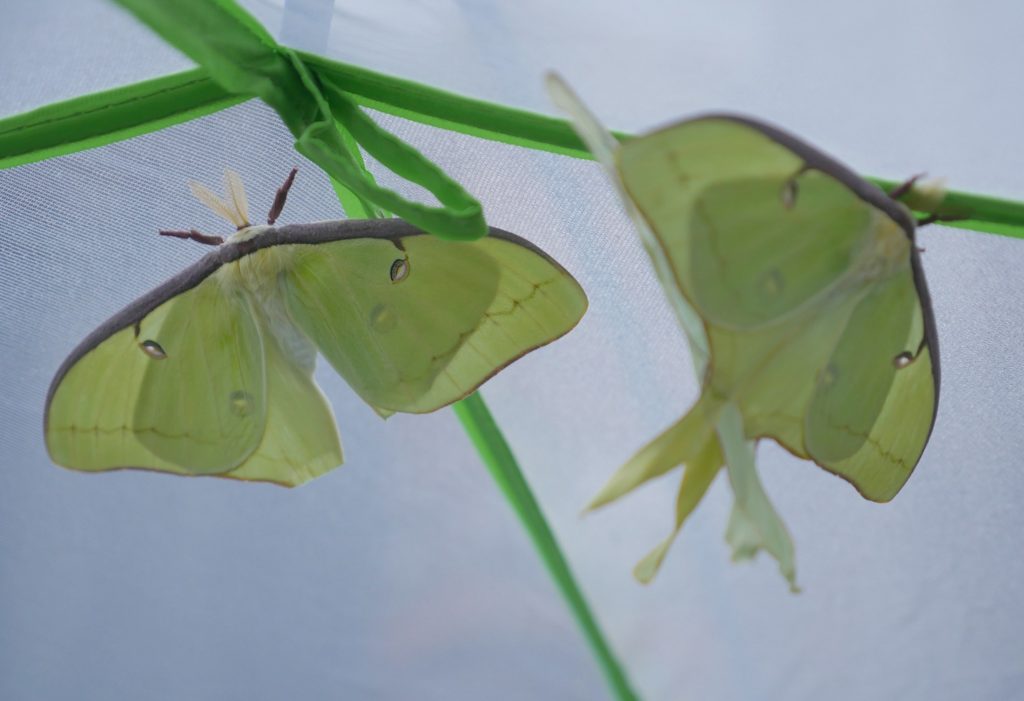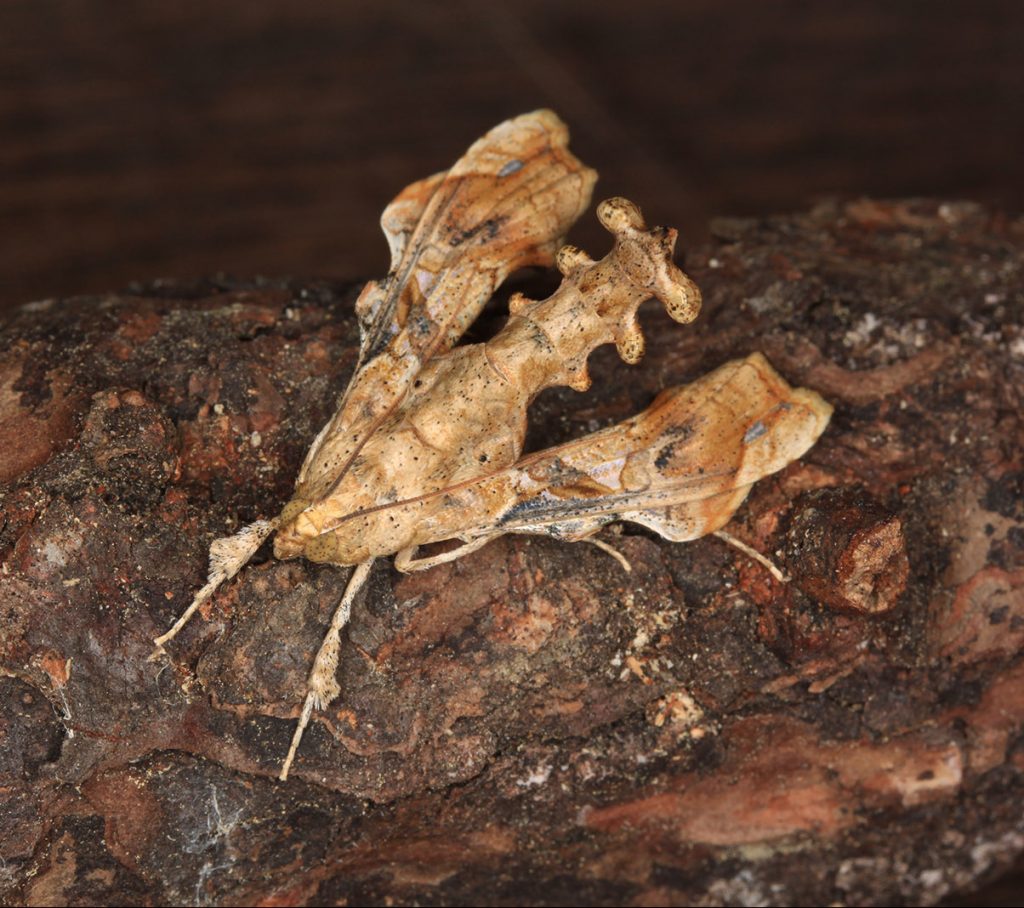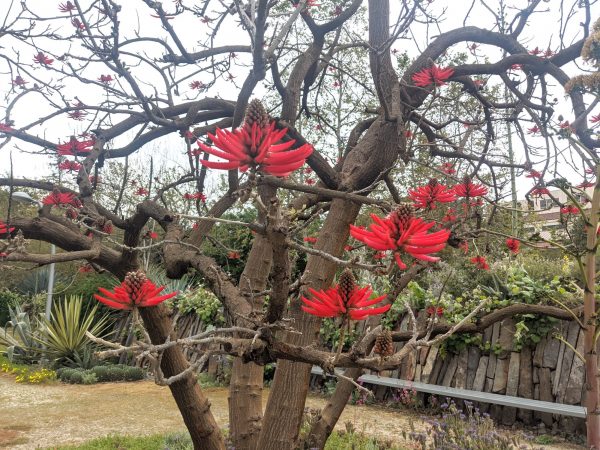McGuire Center staff and students had a productive spring semester.
Juliette Rubin from the Kawahara Lab completed her Ph.D., and her work on the Luna Moth has already resulted in two publications. In one study, she determined that the presence or absence of tails in males is not a factor in female mate selection . In a complementary study using Carolina Wrens, she determined that tails do not make Luna Moths more attractive to diurnal predators.
The Kawahara Lab also led a landmark collaborative study including 88 authors on butterfly evolution. After assembling and dating a massive butterfly phylogeny, they concluded that butterflies originated in North and Central America.
Also at the Kawahara Lab, staff and students conducted a fun project exploring the taxonomy of “worms” found in bottles of tequila and mezcal. The famous “worms” that are added to liquor for flavor are obviously Lepidoptera caterpillars, but what are they? Using COI barcoding, the lab identified all varieties sampled as containing larvae of the cossid moth, Comadia redtenbacheri.
The Daniels Lab investigated population genetic structure in the Florida Duskywing, Ephyriades brunnea floridensis, across fragmented remnants of Florida Pine Rocklands. These skippers, though sometimes locally abundant, are considered a “Species of Greatest Conservation Need” because they are restricted to this critically endangered habitat. The study analysed genetic diversity of populations using microsatellite loci and indicated two distinct groups: the mainland and Florida Keys populations.
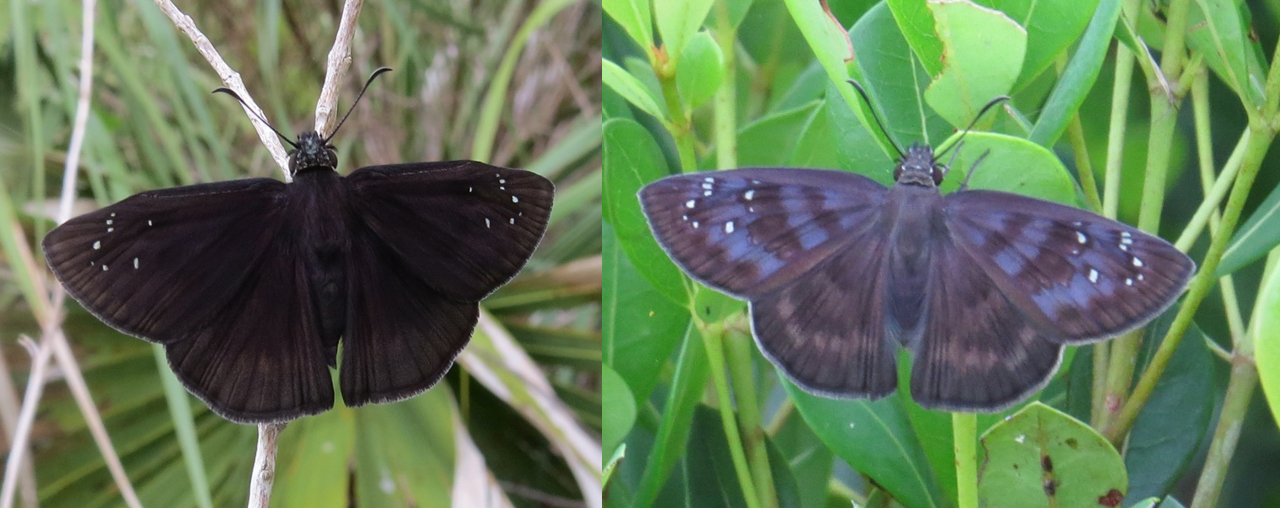
The Willmott research group and collaborators produced several publications on the systematics of Neotropical butterflies, including a comprehensive phylogeny of the subtribe Euptychiina. This incredibly diverse subtribe has more than 500 species and 70 genera. Superficially, these butterflies can seem similar to one another, but appearances are often not indicative of a close relationship. The study summarizes the taxonomy, diversity, and natural history of eight major clades and describes nine new genera, providing an essential framework for continuing studies of the subtribe.
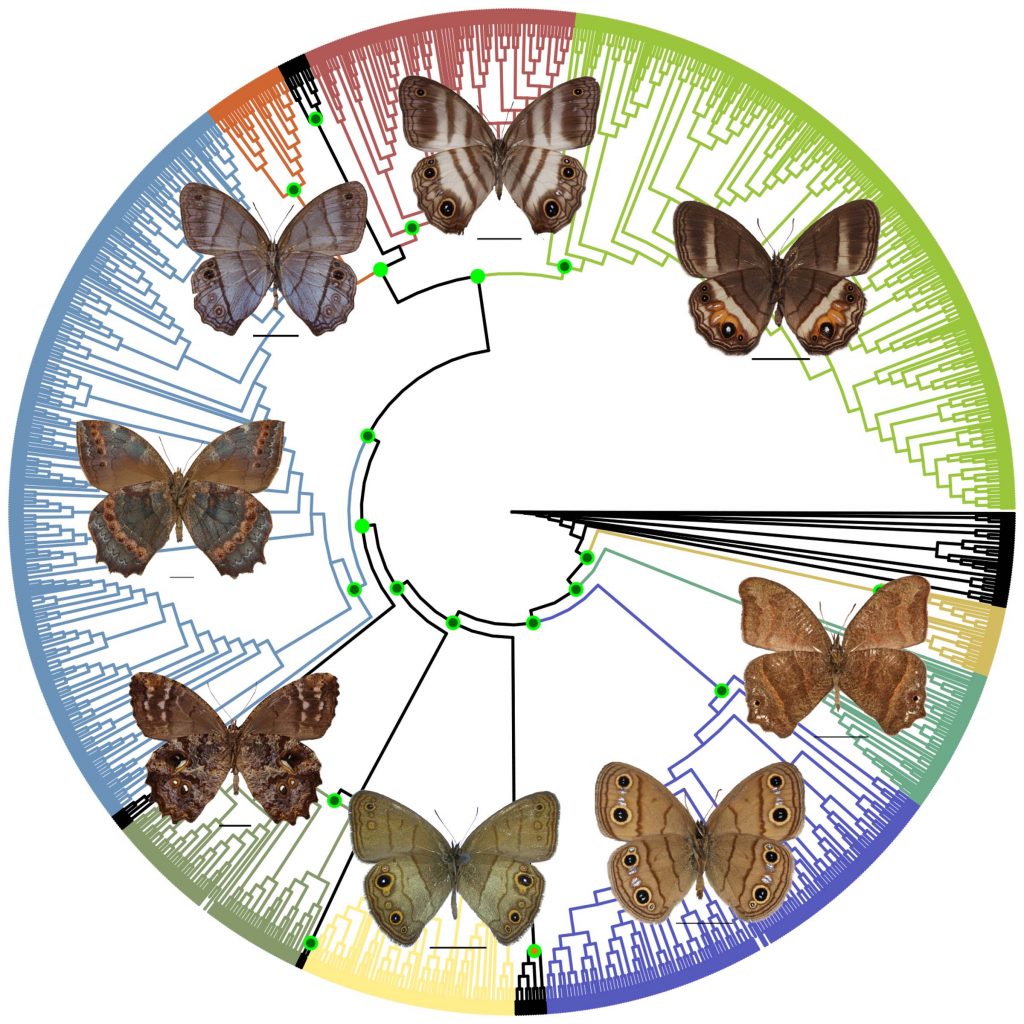
John Heppner and colleagues published several new microlepidoptera papers in Lepidoptera Novae and Zootaxa, including a major review of two genera and descriptions of nine new species of Lecithoceridae from Sumatra.
Jim Hayden contributed to project which resolved the taxonomy of several species of Argyria in the microlepidoptera family Crambidae.
Andrei Sourakov continued his work on moths associated with Erythrina plants. Recently, one of these moths, Erythrina Stem Borer (Terastia meticulosalis), became a pest of Coral Trees, an iconic urban landscape plant in southern California. Using whole genome sequencing techniques, Andrei and colleagues from the University of Texas discovered that the southern California Terastia pest populations belong to a separate western subspecies. Andrei recently traveled to southern California to investigate the extent of the pest problem and possible control measures. In the process, he found another species, the invasive exotic tineid Banana Moth, Opogona sacchari, attacking the trunks of the Coral Trees. You can read about his findings in southern California here.
Stay tuned for Fall semester highlights!
A complete list of all McGuire Center publications by year is available here.
